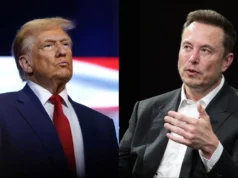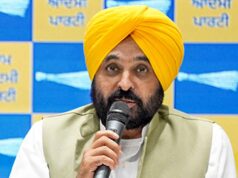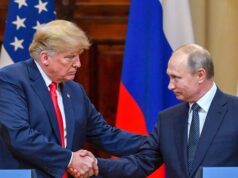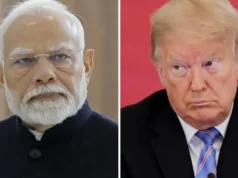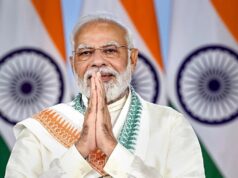In the majority of conflict-ridden cultures, security is characterized by personnel in fatigues, barbed wire, and bunkers. However, it has always been more elusive in Kashmir, where the gap between the people and the government is more important than the quantity of forces on the ground.
For decades, political players fostered that gulf by weaponizing ambiguity rather than bridging it; in Srinagar, they indulged radical sentiment while in Delhi, they praised peace. Their legacy was one of managed instability rather than governance, a valley that hovered between neglect and discontent.
Manoj Sinha’s appointment as the Lieutenant Governor of Jammu and Kashmir since August 2020 must be viewed as a civilisational correction as well as an administrative task in order to combat this genetic illness. He came to destroy its architecture, not to handle crises.
The disappearance of hartals, which once defined and shaped life in the Valley, is arguably the most prominent example of this reversal. What were commonly referred to as “media” shutdowns were actually widespread social stagnation, not just fictitious political instruments.
People tried to stay away from places where lockdowns would occur during earlier regimes, or they even defended them as manifestations of their individuality. Sinha took a different tack; instead of banning them, he rendered them obsolete.
During his tenure, not a single hartal has taken place as a result of bolstering public trust in legitimate governance and eliminating the underground networks that enforce them. This goes beyond upholding law and order; it is a society’s psychological liberation.
The glamourization of terrorism is another severe wound that is included in that psychological shift. Political funerals for militants used to be a sort of public event. While mainstream political parties either ignored it or tacitly supported it to keep their support base, images of dead insurgents fueled folk hero worship and entire constituencies prospered on the tacit embrace of radicalism.
Sinha’s authority has destroyed this myth by depriving it of moral and cultural support rather than by using force. More significantly, militancy has lost much of its romantic appeal, and recruitment of militants is at an all-time low. No catchphrases. No crowds. Not a single symbol. For those who are still at a crossroads in life, there are still other options, but only the harsh reality of wasted lives remains.
Human intelligence teams, mohalla watch networks, and school systems all identified these young people who might be turned into terrorists and rescued using a well-thought-out intervention mechanism. There are no conventional forms of this kind of counter-insurgency. It is the complex stratification of social healing within the state.
For such recoveries, there are no medals to be given or speeches to be broadcast on television. These acts of governance are unparalleled because they fundamentally alter the concept of governance by guaranteeing existence in addition to defending individuals from harm.
There is no greater difference with previous regimes. For many years, Kashmiri politics were characterized by a propensity to steer clear of conflict with the extremism environment. In certain places of worship, sermons went on unchecked. There were radical stories circulating in chat rooms and classrooms. Instead of addressing separatism head-on, political discourse avoided it.
Curfews here, crackdowns there, followed by years of calculated silence, made governance episodic. In contrast, Sinha has challenged and rendered sterile the intellectual foundations that give rise to militancy.
He has, however, done so while upholding constitutional ethics. The fact that the Shopian fictitious encounter was not unreported is among the most groundbreaking statistics he oversaw, and it is practically unheard of in combat areas. That is a purposeful moral signal, not a procedural oddity. Under Sinha, the state enforces peace without taking any quick routes. Its constraint, not its power, is what makes it strong.
The social compact has been restored as a result of this verification, which is evident in places where terror used to rule. School schedules are run regularly for the first time since the insurgency. Instead of staging walkouts, kids from Tral, Kulgam, and Shopian come to class expecting to learn. Regardless of whether exams will be administered or not, teachers have begun preparing for them. The markets are no longer waiting for unclear orders that would cause them to stop moving. The greatest degree of security policy advancement is attained by returning to normalcy.
This verification is obvious in areas where terror once ruled, and it has resulted in the restoration of the social compact. For the first time since the insurgency, regular school timetables are implemented. Children from Tral, Kulgam, and Shopian attend class expecting to study, rather than participating in walkouts. Teachers have started getting ready for exams whether or not they will be given. The markets aren’t waiting for commands that aren’t clear enough to make them stop moving. Restoring normalcy achieves the highest level of security policy advancement.
The motivation behind this change is a party line or slogan. Instead, it is founded on a complex concept that is both in line with administrative strategy and deeply ingrained in ethical conviction.
Sinha’s recent actions demonstrate that a deal with regional chaos does not lead to peace in Kashmir. It results from consistency and decisiveness. He governs according to principles, unlike previous leaders who were clumsy. He bases his governance on legal requirements, as opposed to previous politics that relied on sentiment-based agreements.
Crucially, he has shown that security is the existence of routine, aspiration, and dignity rather than the lack of violence. The confidence of citizens leading worry-free lives is what provides security, not the quiet of acquiescence. The exam rooms in Pulwama, the sports facilities in Anantnag, and the marketplaces in Kupwara all exude that confidence today.
And that is Sinha’s lasting legacy: the restoration of normalcy as a birthright, not just the persistent repression of disturbance. He has not only restored order but also the prospect of a future by regaining Kashmir’s security.



